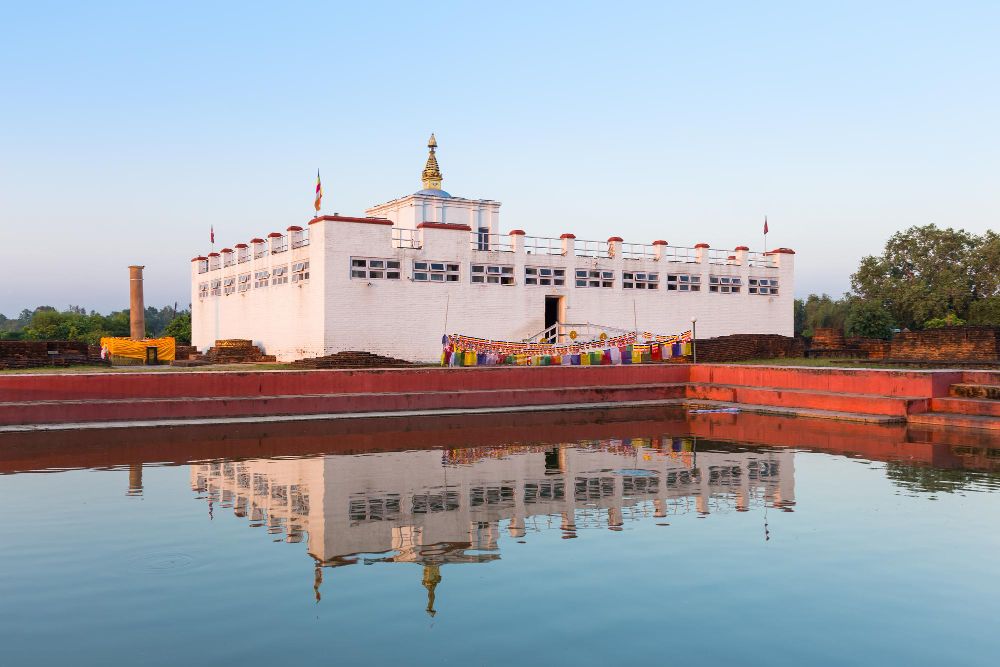Exploring Lumbini: The Birthplace of Buddha

Lumbini, nestled in Nepal's Terai plains, is one of the world's most sacred pilgrimage sites. Recognized as the birthplace of Siddhartha Gautama (563-483 BCE), who later became Lord Buddha, this UNESCO World Heritage Site (inscribed in 1997) attracts over 1 million visitors annually. Beyond its religious significance, Lumbini offers a unique blend of archaeological wonders, serene landscapes, and profound spiritual energy that continues to captivate historians, pilgrims, and travelers alike. Explores Lumbini's history, sacred sites, cultural importance, and practical travel tips to help you experience this extraordinary destination fully.
The Historical Significance of Lumbini
The Birth of Buddha: A Divine Legend
According to Buddhist texts, Queen Maya Devi of the Shakya clan was traveling to her parental home in Devadaha when she stopped in Lumbini's gardens. While resting under a sal tree, she gave birth to Prince Siddhartha, who would later renounce his royal life to seek enlightenment.
historical evidence of lumbini
- Ashoka Pillar (249 BCE): Emperor Ashoka's stone pillar with Brahmi script confirms Lumbini as Buddha's birthplace.
- Maya Devi Temple Excavations: Archaeologists uncovered a nativity marker stone and ancient brick structures dating to the 3rd century BCE.
- Chinese Pilgrims' Records: Faxian (5th century) and Xuanzang (7th century) documented Lumbini's sacred sites.
Lumbini's Rediscovery & UNESCO Recognition
After centuries of neglect, Lumbini was rediscovered in 1896 by Nepalese archaeologists and German scholar Dr. Alois Anton Führer. Major restoration began in the 1960s under UN support, leading to its UNESCO designation in 1997 for its outstanding universal value.
Sacred Sites & Must-Visit Attractions
The Maya Devi Temple Complex
The spiritual epicenter of Lumbini contains:
- The Nativity Marker Stone: Exact spot of Buddha's birth beneath a sacred sal tree.
- The Sacred Pond (Puskarni): Where Maya Devi bathed before giving birth.
- Ancient Brick Monasteries: Ruins of 3rd-century BCE viharas (monastic dwellings).
The Ashoka Pillar
Emperor Ashoka's 6-meter sandstone pillar bears an inscription declaring Lumbini as Buddha's birthplace and exempting it from taxes.
Lumbini Monastic Zone
Divided into East (Theravada) and West (Mahayana/Vajrayana) Monastic Zones, this area features stunning monasteries built by Buddhist nations:
Notable Monasteries:
- Great Drigung Kagyud Lotus Stupa (Tibetan) – A colorful, intricately designed stupa.
- Royal Thai Monastery – A white marble temple with golden roofs.
- Myanmar Golden Temple – A replica of Myanmar's Shwedagon Pagoda.
- Zhong Hua Chinese Buddhist Monastery – Traditional Chinese architecture with serene gardens.
The Eternal Peace Flame
A symbol of non-violence, this flame has burned continuously since 1986, representing global harmony.
Lumbini Crane Sanctuary
A biodiversity hotspot within the Lumbini Development Zone, home to endangered Sarus cranes.
The Spiritual Experience: Meditation & Pilgrimage
Meditation & Retreats
- Many monasteries offer meditation courses:
- Panditarama Lumbini Vipassana Center (10-day silent retreats).
- Dharma Swami Maharaja Buddha Vihar (Theravada meditation).
Pilgrimage Rituals
Parikrama (Circumambulation): Walking meditation around sacred sites.
Butter Lamp Offerings: A symbolic gesture of enlightenment.
Bodhi Tree Worship: Paying homage to descendant trees of Buddha's enlightenment fig tree.
Best Time to Visit Lumbini
- October–March: Pleasant weather (15–25°C), peak pilgrimage season.
- April–June: Hot (up to 40°C) but fewer crowds.
- July–September: Monsoon (lush greenery but travel disruptions).
How to Reach Lumbini
- By Air: Gautam Buddha Airport (Bhairahawa) with flights from Kathmandu.
- By Road: 6–7 hours from Kathmandu or 3 hours from Pokhara.
- From India: Sonauli border (30 min drive to Lumbini).
Where to Stay
- Budget: Lumbini Buddha Garden or Peace Palace.
- Mid-Range: Hotel Kasai or Lumbini Village Lodge.
- Luxury: Buddha Maya Garden (5-star resort).
Why Lumbini is a Must-Visit Destination
- UNESCO World Heritage Site with unparalleled historical value.
- Active Pilgrimage Hub for Buddhists worldwide.
- Architectural Diversity in monastic designs.
- Peaceful Ambiance ideal for meditation.
Final Thoughts
Lumbini is not merely a destination—it is a living testament to one of humanity's greatest spiritual revolutions. As you walk the same paths where Buddha took his first steps, you become part of a 2,600-year-old continuum of seekers, pilgrims, and truth-seekers. The air hums with a profound stillness, as if the very earth remembers the moment when the prince who would become the Buddha entered the world.
"May your visit to Lumbini bring wisdom, peace, and a deeper connection to Buddha’s legacy."

Admin
Recent Articles

Everest Base Camp
Apr 16, 2025

Ultimate Guide to Trekking in Nepal
Apr 10, 2025

Exploring Lumbini: The Birthplace of Buddha
Mar 26, 2025

Solo Trekking: Tips for a Safe and Enjoyable Journey
Mar 14, 2025
